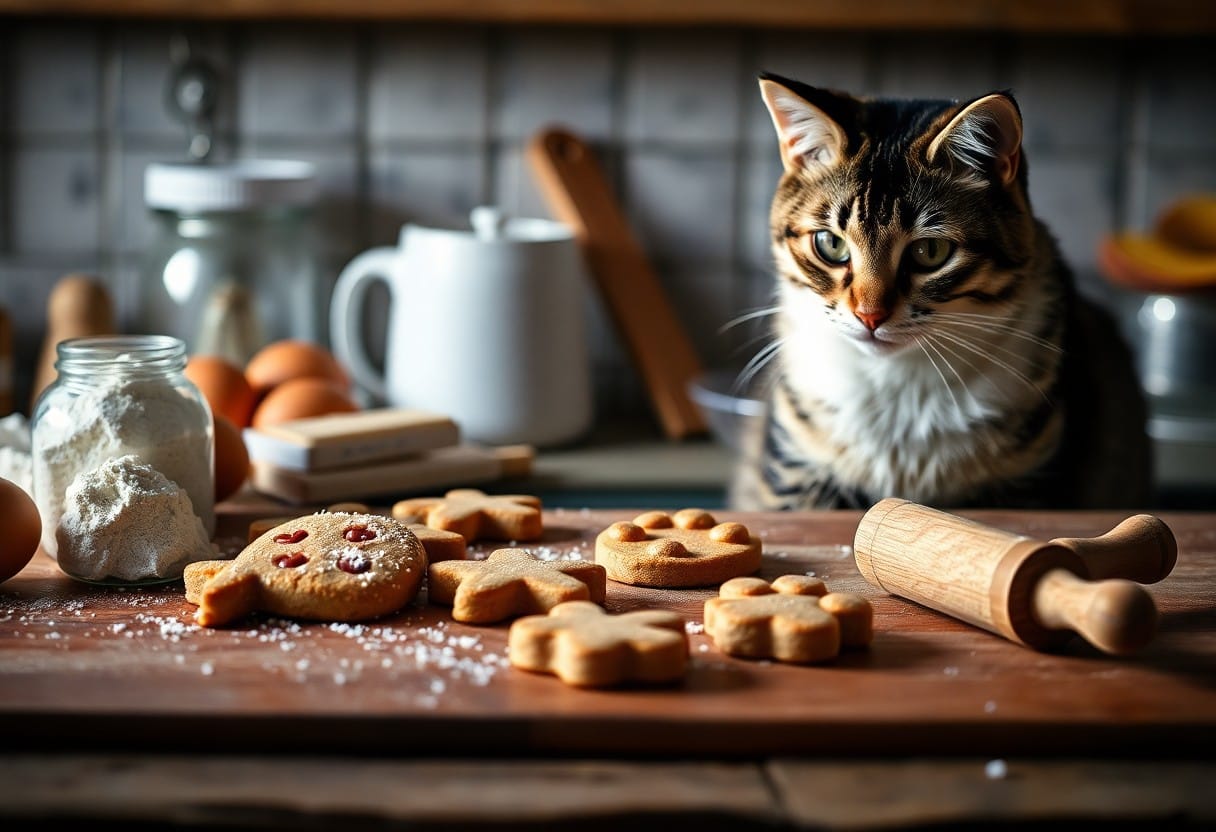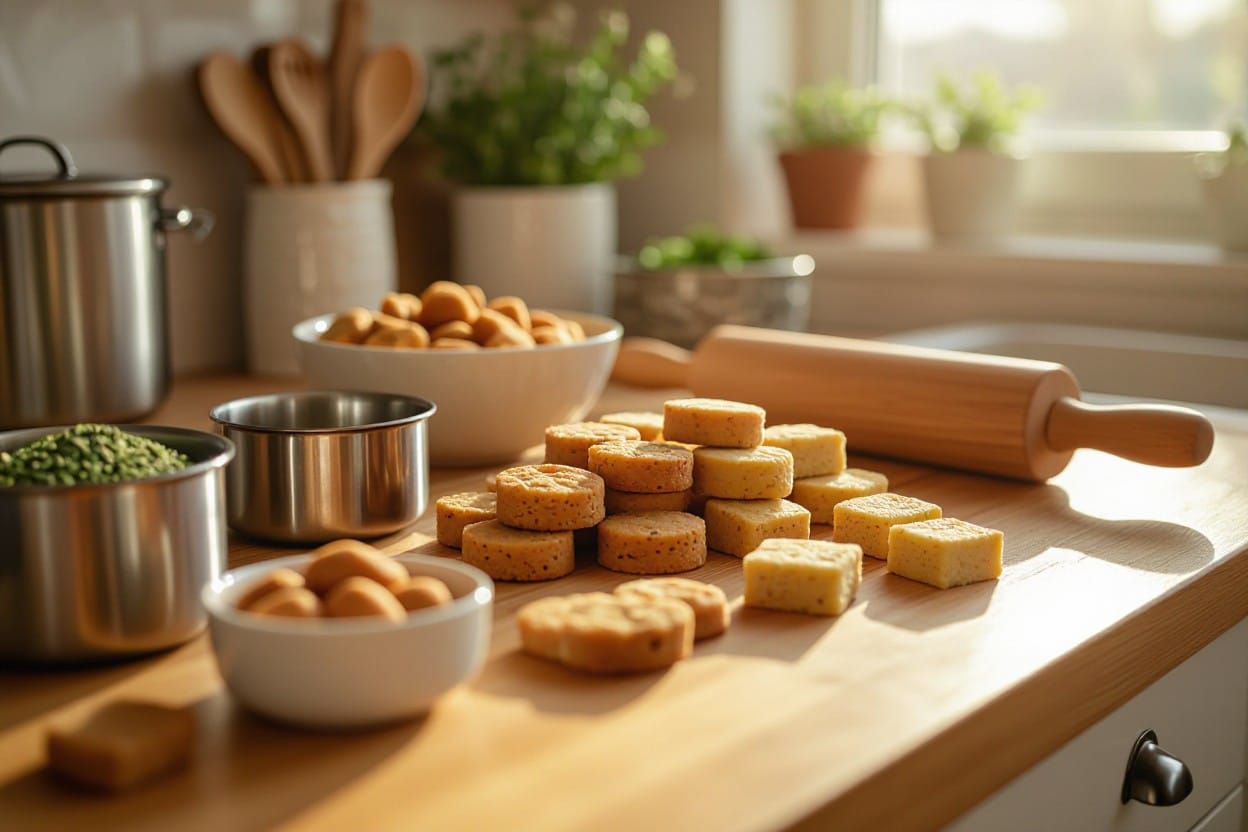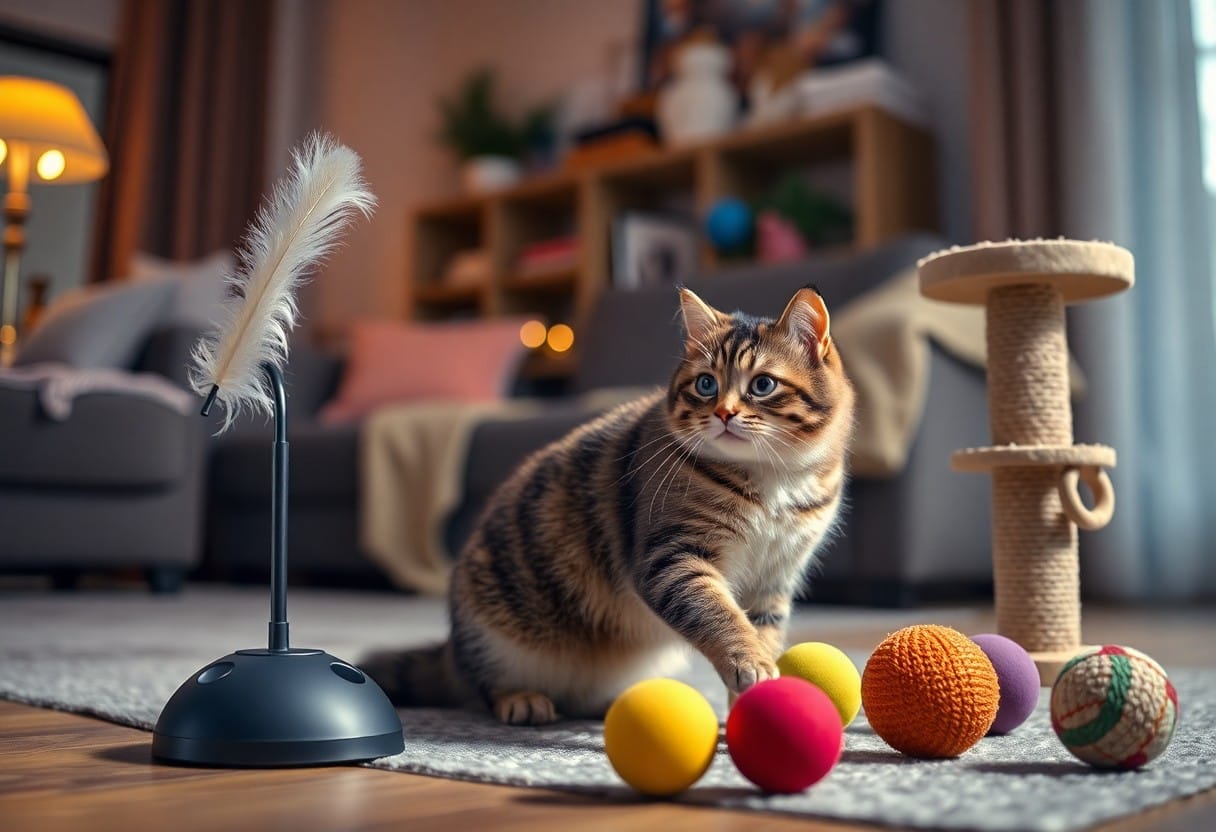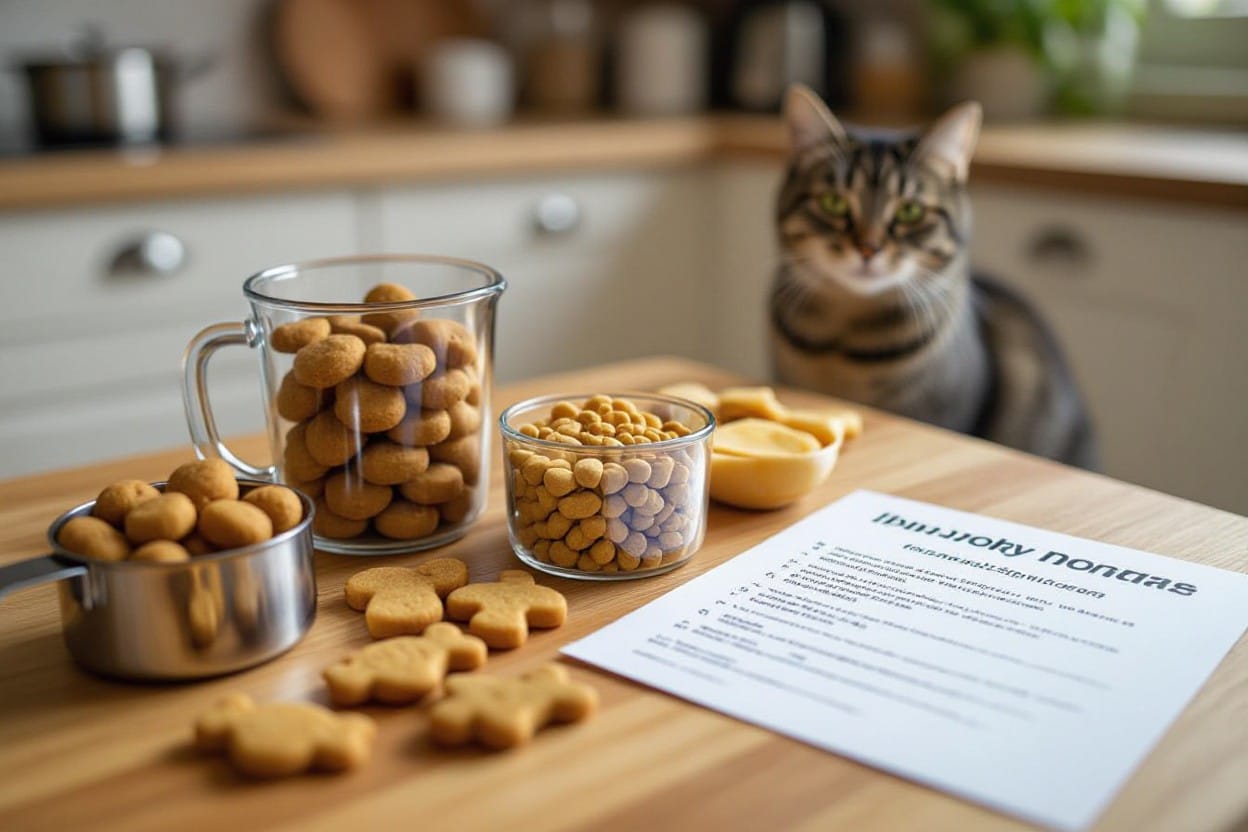There’s nothing more rewarding than treating your feline friend to some homemade goodies. In this guide, you’ll discover easy recipes that use safe ingredients, ensuring your cat enjoys every bite without any harmful additives. You’ll learn the basics of baking for your cat, from choosing the right ingredients to important baking tips, allowing you to create delicious and nutritious treats that will strengthen your bond with your pet. Get ready to make healthy snacks that will make your cat purr with delight!
Key Takeaways:
- Homemade cat treats can be made using simple, healthy ingredients that are safe for feline consumption.
- Experimenting with different flavors and textures can help cater to your cat’s preferences, making treats more appealing.
- Following hygiene and storage guidelines is important to ensure the treats remain fresh and safe for your cat to enjoy.
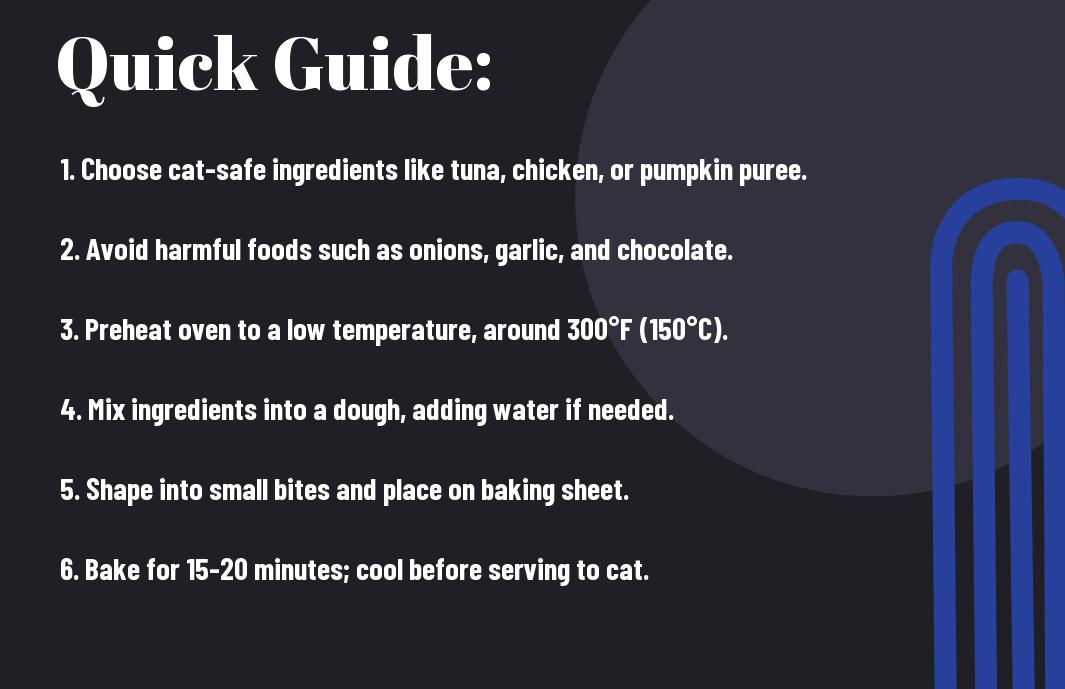
Types of Homemade Cat Treats
A variety of homemade cat treats can delight your furry friend while being tailored to their tastes and health needs. You can explore options like:
| Baked Treats | Treats made by baking dough, often incorporating meats, fish, or veggies. |
| Dehydrated Treats | Crispy, chewy snacks created by removing moisture from fresh ingredients. |
| Frozen Treats | Cold bites made from blended ingredients, perfect for warm days. |
| Raw Treats | Unprocessed morsels that rely on fresh meat or fish flavors. |
| Cooked Treats | Dishes that are thoroughly cooked, ensuring safety and flavor. |
Recognizing the variety of homemade treats you can offer will enhance your cat’s diet and overall happiness.
Baked Treats
There’s nothing quite like the enticing aroma of baked treats filling your home. These treats can be customized with ingredients like chicken, salmon, or even certain vegetables that your cat loves. Baked options not only make your treats appealing but also add texture that can benefit your cat’s dental health.
Dehydrated Treats
For a unique and nutritious option, consider dehydrated treats. These are created by slowly removing moisture from fresh ingredients, allowing for long-lasting, concentrated flavors your cat will adore.
Treats that are dehydrated offer the convenience of shelf stability while preserving the crucial nutrients found in the original ingredients. You can make them from a variety of proteins like chicken or fish, chopped into small pieces. Just beware of using any dangerous ingredients such as onions or garlic, which can be toxic to cats. Opt for pets’ favorite flavors, and you’ll likely see their energy and enthusiasm boost when you reward them with these irresistible snacks.
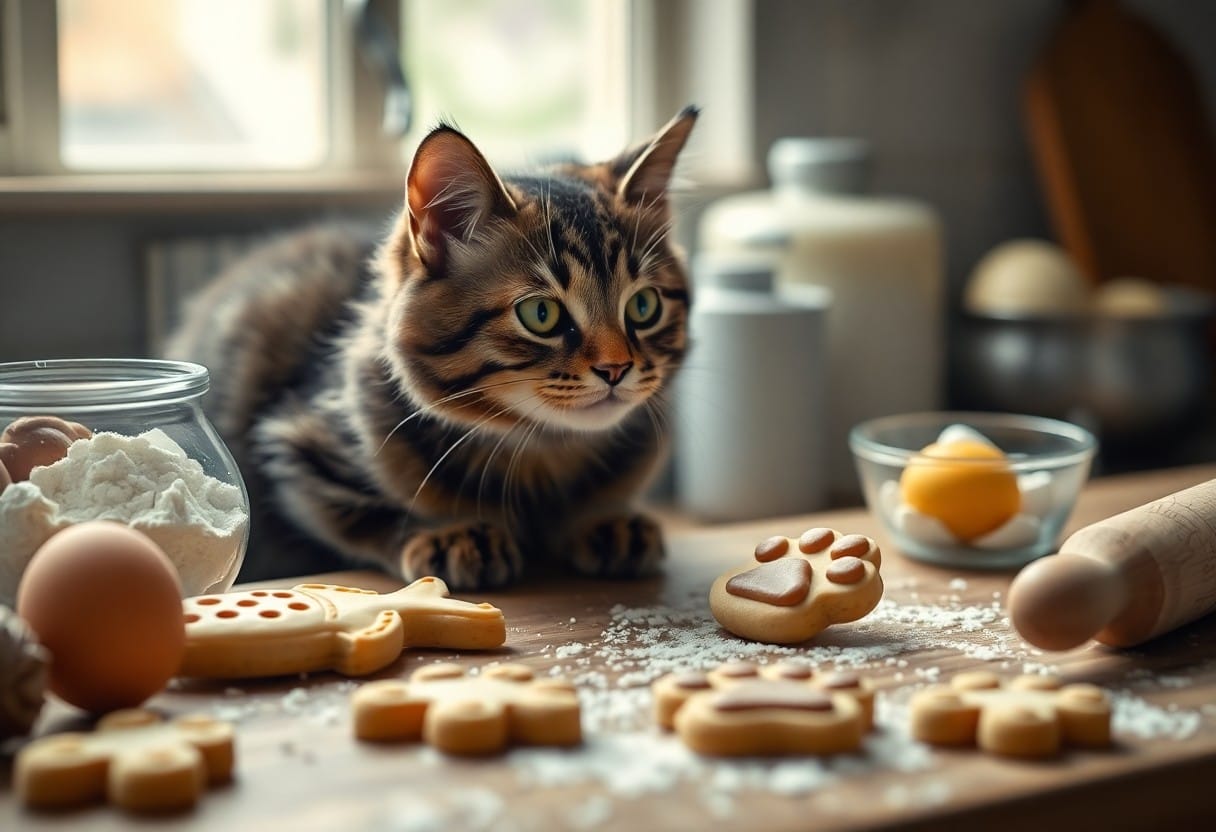
Tips for Baking Cat Treats
You will create delicious and healthy cat treats by following some simple tips. Ensure the ingredients are fresh and of high quality, as this will enhance flavor and nutrition. Always preheat your oven for consistent baking results. Use a variety of shapes and sizes to keep your feline friend engaged. Store the treats in an airtight container to maintain their freshness. Lastly, consult your veterinarian about the best ingredients for your cat’s diet.
- Use fresh ingredients
- Preheat your oven
- Experiment with shapes
- Store properly
- Consult your vet
Any adjustments to your baking process can lead to creative and healthier options for your furry companion.
Ingredients to Use
On your baking journey, focus on using wholesome ingredients that are safe for cats. Common options include whole wheat flour, oats, and pureed pumpkin, which can provide vital nutrients while appealing to your cat’s taste buds. Additionally, consider ingredients like chicken or fish to add protein, keeping your kitty happy and healthy.
Ingredient Substitutions
There’s always room for flexibility when it comes to your baking ingredients. If you happen to run out of a certain item, you can replace it with others that are equally beneficial for your cat. For example, if you don’t have whole wheat flour, oat flour can be an excellent alternative, offering similar texture and taste. Always ensure the substitutes are safe for feline consumption.
Ingredients that are not safe for cats include onions, garlic, and chocolate, as they can cause serious health issues. When modifying recipes, be cautious of common allergens like dairy and wheat. Stick to ingredients that your cat has previously enjoyed to avoid any adverse reactions. If you’re uncertain about a substitution, consult your veterinarian for guidance.
Step-by-Step Baking Instructions
After gathering your ingredients, it’s imperative to follow your chosen recipe closely to achieve the best results. Below is a simple overview to guide you through the process of baking delectable cat treats.
| Step | Description |
|---|---|
| 1 | Preheat your oven to the specified temperature. |
| 2 | Mix all ingredients in a bowl until well combined. |
| 3 | Roll the dough and cut it into your desired shapes. |
| 4 | Place the treats on a baking sheet lined with parchment paper. |
| 5 | Bake for the recommended time, then allow to cool. |
Basic Recipe for Carrot Cat Treats
Any cat can enjoy these nutritious and tasty carrot treats! You will need finely grated carrots, whole wheat flour, and an egg. Simply mix the ingredients together, roll out the dough, cut it into fun shapes, and bake until golden brown. Your furry friend will love these delightful crunches!
Customizing Recipes
Now you can tailor your cat treats with various flavors and textures, making them even more appealing to your feline friend. Feel free to incorporate ingredients like tuna, chicken, or catnip to enhance the taste. Adjust the texture by altering the flour type or adding oats for chewy treats.
Understanding your cat’s dietary needs is imperative when customizing recipes. Many cats may have food sensitivities, so it’s wise to avoid ingredients that could be harmful, such as onions or garlic. You can include protein-rich options like chicken or fish in moderation, which many cats enjoy. Be cautious of high-fat ingredients, as obesity can be an issue for some felines. By ensuring you provide treats that are both fun and healthy, you keep your cat happy and satisfied!
Factors to Consider When Baking for Cats
To successfully bake treats for your cat, consider the following factors:
- Dietary restrictions
- Flavor preferences
- Ingredient quality
After taking these into account, you’ll be better prepared to create delightful and safe treats for your feline friend.
Dietary Restrictions
With each cat having unique dietary restrictions, it’s important to identify any allergies or health conditions that may affect what you can include in their treats. Consult with your veterinarian to ensure you are using ingredients that are safe for your cat.
Flavor Preferences
With a keen understanding of your cat’s flavor preferences, you can elevate their treat experience. Cats often enjoy flavors like chicken, fish, and even certain vegetables, so incorporating these favorites can make your baked goods more appealing.
Restrictions on flavor are equally important. While you might want to experiment with various flavors, avoid ingredients that are toxic to cats, such as onions, garlic, chocolate, and grapes. Instead, focus on high-quality protein sources like tuna, chicken, or turkey, as many cats are naturally attracted to these tastes. Including cat-safe herbs like catnip can also enhance flavor while providing added benefits!
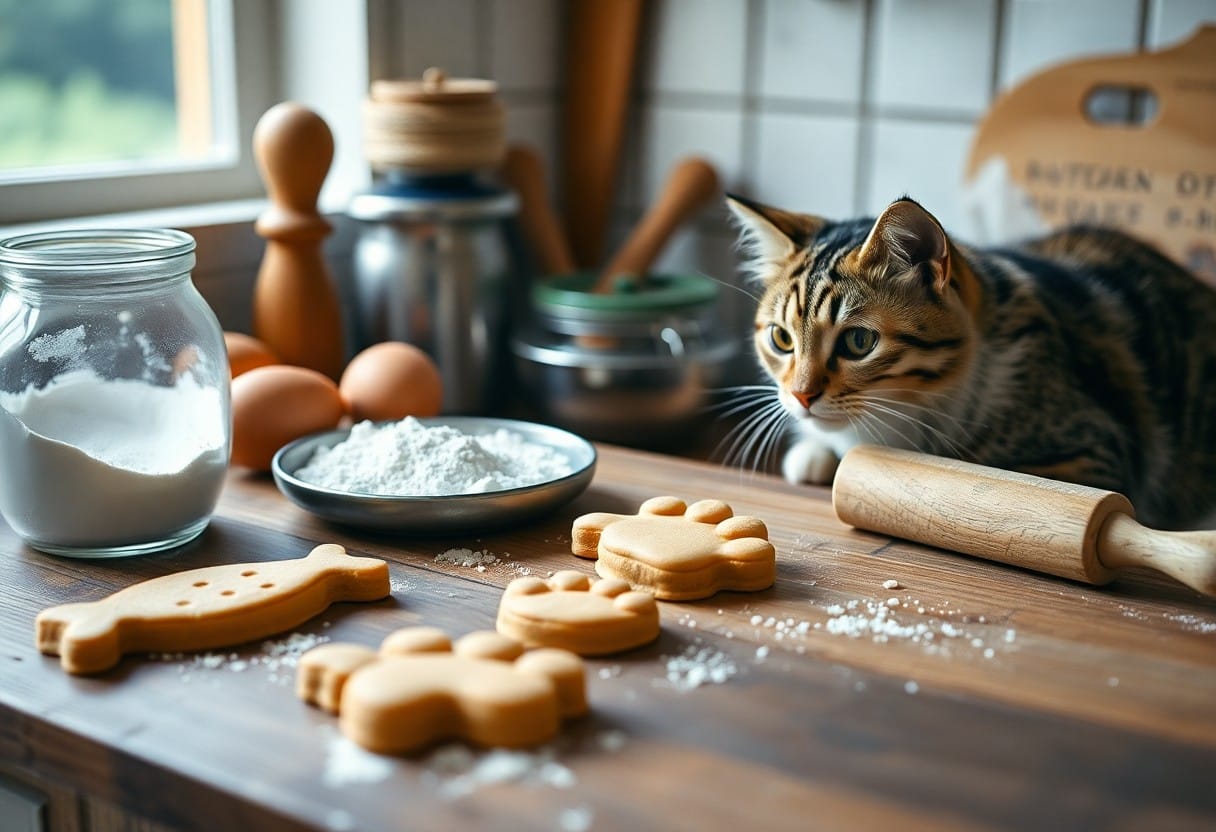
Pros and Cons of Homemade Cat Treats
Keep in mind that making homemade cat treats has its advantages and disadvantages. Understanding these will help you decide if it’s the right choice for you and your feline friend.
| Pros | Cons |
|---|---|
| Control over ingredients | Time-consuming |
| Customization for dietary needs | Potential for incomplete nutrition |
| Quality assurance | Messy kitchen |
| Cost-effective | Requires baking skills |
| Fun bonding experience | Storage challenges |
Benefits of Baking at Home
Home baking allows you to experiment with unique flavors and ingredients that cater to your cat’s preferences. You can choose high-quality, natural products while avoiding additives found in commercial treats. Gifting your cat with hand-crafted goodies may also enhance your bond and provide a fulfilling activity for you.
Potential Drawbacks
Drawbacks of making treats yourself can vary from logistical challenges to nutritional concerns. You might find that creating the treats takes more time than expected, and it may require a bit of trial and error to perfect the recipes.
For instance, if you don’t have enough expertise in cat nutrition, homemade treats can lead to potential deficiencies in your cat’s diet, as balanced nutrition is vital for their health. Some ingredients indicate a risk of allergies, and if you are not careful, you could inadvertently use a substance that is harmful to your pet. Additionally, the process can get messy, and without proper storage methods, your treats could spoil quickly, leading to waste. Weigh these factors carefully to ensure you provide safe, delightful snacks for your cat.
Frequently Asked Questions
Your journey into baking for your cat might raise a few questions. Whether you’re curious about ingredient substitutions, alternative recipes, or specific dietary concerns, understanding the basics will help you create safe and tasty treats for your furry friend. This section addresses common inquiries to ensure you feel confident in your homemade baking adventure!
Storage Guidelines
Guidelines for storing homemade treats are imperative for maintaining freshness. Always keep the treats in an airtight container to prevent them from drying out. You can store them in a cool, dry place or in the refrigerator for added longevity. If you bake in bulk, consider freezing some treats, making sure they are well-sealed to preserve their flavor and texture.
Shelf Life of Treats
Some homemade cat treats can last anywhere from a few days to several weeks, depending on the ingredients used. Typically, treats made with natural preservatives have a longer shelf life, while those lacking preservatives should be consumed more rapidly to avoid spoilage.
Plus, treats with high moisture content may spoil faster, so it’s best to keep them refrigerated or frozen if not consumed quickly. Always check for any signs of mold or strange odors before giving them to your cat. If you’re unsure about their freshness, it’s better to err on the side of caution and discard any suspicious-looking treats. Your cat’s health depends on ensuring they get safe, clean snacks!”
To wrap up
Considering all points, baking for your cat can be a rewarding and enjoyable experience that strengthens your bond with your furry friend. By using fresh, high-quality ingredients and following simple recipes, you can create tasty, nutritious treats tailored to your cat’s preferences and dietary needs. This guide serves as a springboard for your culinary adventures, offering tips and ideas to keep your cat happy and healthy. So, roll up your sleeves, gather your supplies, and start baking delightful goodies your kitty will love!
Q: What are some benefits of baking homemade treats for my cat?
A: Baking homemade treats for your cat can provide several benefits. First, you have complete control over the ingredients, allowing you to avoid preservatives, artificial flavors, and fillers commonly found in commercial treats. This means you can tailor the recipes to accommodate any allergies or dietary restrictions your cat may have. Additionally, baking treats can strengthen your bond with your feline friend as it allows you to take part in their care and nutrition actively. Furthermore, homemade treats can be a fun and fulfilling activity that provides creativity and joy not only for you but also for your cat as you surprise them with delicious, wholesome snacks.
Q: What ingredients are safe for making cat treats, and what should I avoid?
A: When making treats for your cat, it is vital to use safe ingredients. Common safe ingredients include pumpkin, chicken, fish, and certain vegetables such as carrots and peas. Whole grains like oats can also be a good base for some treats. However, there are several ingredients you should avoid, including onions, garlic, chocolate, grapes, and raisins, as these are toxic to cats. Always check with your vet if you are unsure about the safety of specific ingredients, and opt for recipes that utilize well-regarded ingredients for feline nutrition.
Q: Are homemade cat treats more cost-effective than store-bought options?
A: Homemade cat treats can often be more cost-effective than store-bought options, especially if you buy ingredients in bulk. While the initial investment in ingredients might seem higher, the ability to make larger batches means that you can save in the long run. Furthermore, you can create treats that cater specifically to your cat’s preferences without purchasing multiple products that vary in price and quality. By making treats at home, you can also reduce waste by using ingredients that you already have on hand, making it an economical choice for many cat owners.
